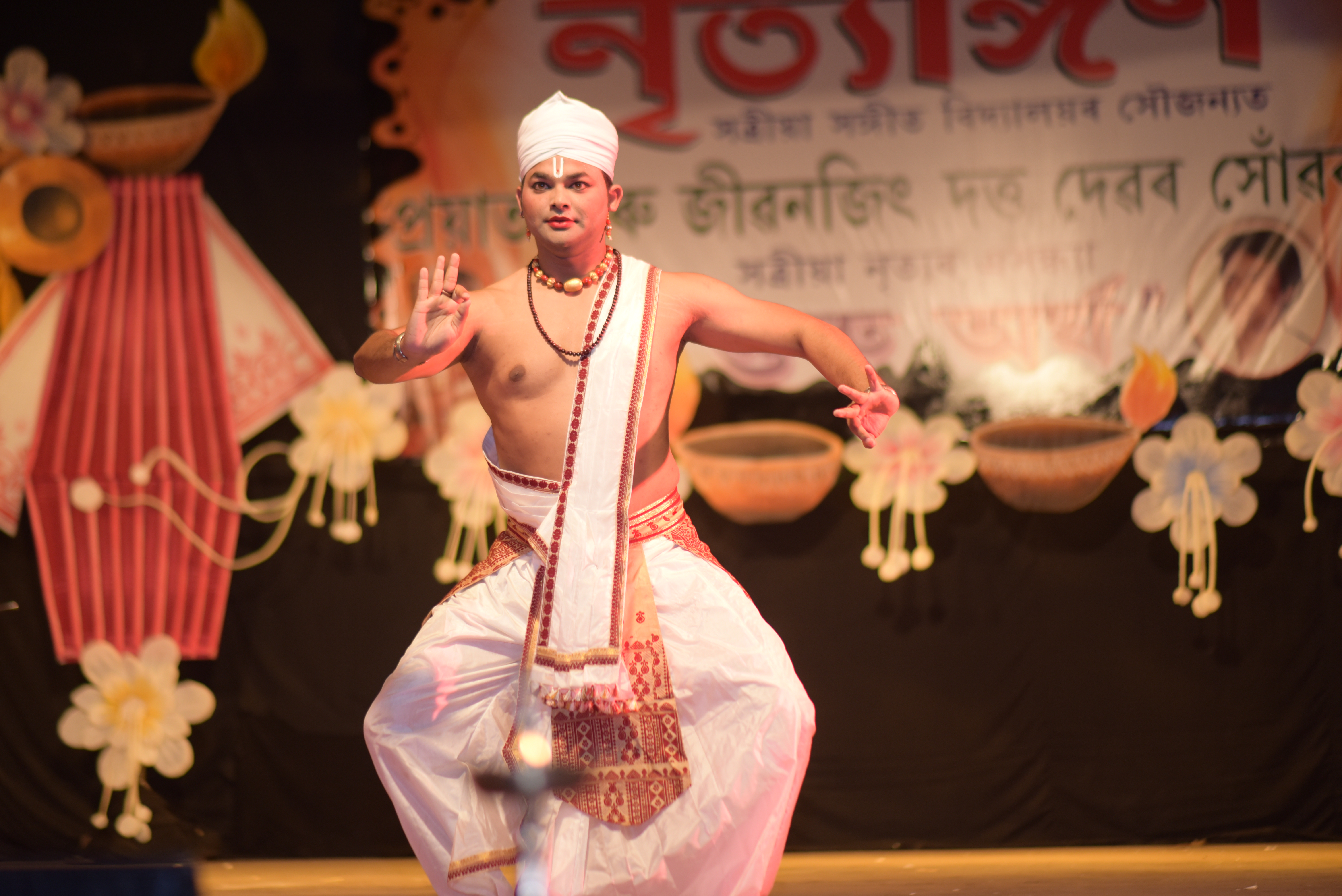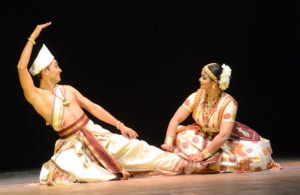Early Years of Borish Dutta
Borish Dutta was born to a culturally rich family in Guwahati. The three year old Borish Dutta was introduced to this great form of classical dance by his father and teacher, Late Guru Jibanjit Dutta. Under his tutelage the young Boris Dutta showed calibre and promising talent as a future exponent of Sattriya Dance. Television media spotted and chose him to perform at the tender age of seven . In 1999, Guwahati Doordarshan Kendra was the first to give this then upcoming talent a platform to exhibit his art under the eminent guidance of his Guru. Undoubtedly, one and all applauded his performance. The appreciation and encouragement, motivated young Borish Dutta to continue his passion with hard work as well as devotion.
Achievements of Borish Dutta
The seven year old realised that looking back was no longer an option; moving ahead developing his skills was his only goal. Keeping his ambition in mind, he went to participate in many events and workshops. Borish’s hard work soon got rewarded. In 2005, he won the National Scholarship in Sattriya Dance. Borish Dutta obtained his Visharad Degree in Sattriya Dance from Sangit Sattra in the year 2010, not surprisingly he secured ‘Special Position’.
He is a beyond doubt a dedicated and passionate artist. Although he enjoys the stage but he makes sure the audience stays spellbound by his dance. The perseverant Borish Dutta has earned kudos and accolades by performing in various states including his home state, Assam.
In 2015 won the prestigious title of Mr. Guwahati, organised under the banner of Prag News channel.
And the learning journey continues…
The learned is always curious and Borish Dutta is not an exception. Alongside dance, he gradually developed interest to learn the folk musical instrument called Khol. Today, his cultural journey do not end with dance, he is nurturing his talents by showing tremendous interest in Khol. Consequently, in 2010-11 he successfully obtained his Diploma in Khol with flying colours.
Guru Jibanjit Dutta and Guru Bhabananda Borbayan of Uttar Kamalabari Sattra, Majuli trained him to play the Khol skillfully. His hunger for music did not end here and hence, Borish decided to do a training on Tabla under the esteemed guidance of Guru Jatin Chetia.
Furthermore, a Master’s degree in English from Guwahati University is his another academic endeavour.





